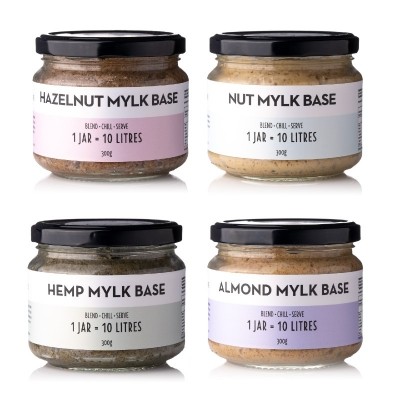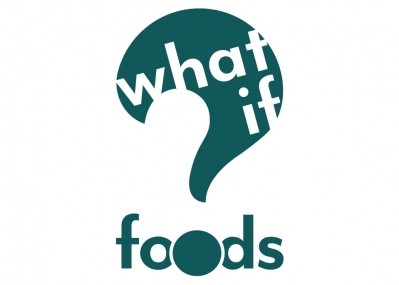The Pantone of flavours: Taste-based profiling tech vows to redefine flavour industry and boost NPD

According to iSense CEO Mathieu Aste, at present flavours are being sold and defined based on artistry and anecdotes that evoke feelings – but not data – which adds a lot of guesswork for manufacturers who have no reliable base for comparison.
“Flavours today are defined by many parameters – their chemistry, their applications, their solubility, etc. – but somehow, not according to their most important attribute, which is taste,” Aste told FoodNavigator-Asia.
“Flavour houses could have thousands of similar flavours such as chocolate and vanilla in their portfolios, but because it is difficult to know which would fit a manufacturer’s new product based on taste, oftentimes they find it easier to just create a new flavour from scratch rather than choosing from what they already have, adding immense complexity to the supply chain.
“One of the biggest challenges in defining taste is that different attributes may present differently to different people and cultures, e.g. what is zesty for one person may present differently to someone else. [This has been hard to overcome as] until now, there has been no frame of reference a la a colour palette for people to compare and choose colours from like what Pantone created to change the colours industry – we want to do the same for flavours.”
What iSense has done to solve the industry’s quandary is to develop a standardized ‘flavour language’ so that everyone has a similar understanding of the flavour.
“Quite simply, we provide a box for a specific desired flavour type, say strawberry, which contains vials of liquids with attributes that are known to make up that flavour, e.g. creamy, fruity pineapple, brown caramel. The company’s flavourists will then quantify the different attributes in the flavour, using tastes and smells from the vial liquids to standardize their input, and then rate their flavour for the strength of each of these attributes,” explained Aste.
“This data then goes into our software where a profile is created for the flavour, giving it a unique taste signature which can be used to compare and benchmark with other similar flavours so that the manufacturer can identify the right flavour to use for the new product.”
One of the main benefits of this technology for food manufacturers is the removal of guesswork and implementing the use of proper data into the flavour selection process.
“The product development process today is very iterative and flavour choice is known to be cumbersome especially when you may have hundreds of different strawberry flavours to choose from, taste, use in the product and then just hope it matches or have to try again,” said Aste.
“Our technology helps manufacturers to shorten the development time by making more accurate flavour decisions based on data, which in turn greatly increases the new product development success rate.
“It is also able to increase productivity by helping to reduce the inventory needed – so as opposed to having to keep 300 variations of the same flavour to keep trying and experimenting with, we could help to reduce this to just as many as are actually needed. Companies can also benefit by creating the specific profile they want first and bringing this to flavour suppliers and asking them for something specific instead [of an array of ‘maybes’].”
iSense has also created a virtual flavour marketplace, a platform where visitors can view the profiles of different flavours to find the one with right attributes for their products and make direct purchases as well.
The marketplace currently carries the profiles of flavours from multiple flavour houses across Malaysia, India, South Korea, Australia, Singapore and China. It is also working with well-known food firms such as Nestle, Takasago and Essential.
Trends in flavour
iSense’s work has been primarily in the sweet space so far, but within a few weeks it will also start profiling savoury flavours, starting with chicken.
“Chicken is the biggest flavour category in the savoury sector with some US$1bn in sales globally, and there are about 50,000 different variants of this worldwide – we know there is a strong desire within the F&B industry to simplify their chicken flavour collection so we will be developing a ‘chicken flavour language’ and starting to profile this next,” said Aste.
“After that we’ll move on to beef, pork, shrimp and more – savoury flavours are definitely booming these days due to the plant-based craze that is going on and just about every F&B manufacturer making some form of alternate meat or dairy and trying to make these taste as similar to the real thing as possible.”
iSense Global Marketing Director Juan Mejia added that due to the pandemic, consumers are also looking for a lot more comfort foods so classic flavours have also been trending.
“We’ve seen the classics such as chocolate, strawberry and vanilla used a lot more in product development than they were before over the past two years,” he said.
Future of flavour
Aste predicts that artificial intelligence will be playing a big role in the industry in the next decade, and told us that all the data being gathered by the platform now aims to make the most of this.
“In another 10 years or so, sensors will come into play but these will only be able to measure the electrical signals in the flavour to specify the taste – definitely not convert this into a sensory perception like creamy etc. as only humans can do this,” he said.
“However, as technology develops we are looking to use our sensory data gathered to help train the platform and algorithm to translate these electrical signals into perceptions that humans can understand via AI.
“The data is key to teaching the AI how to do this, so we are already mapping this our to be ready with good quality, standardized data for the relevant machines when the time comes.”






















